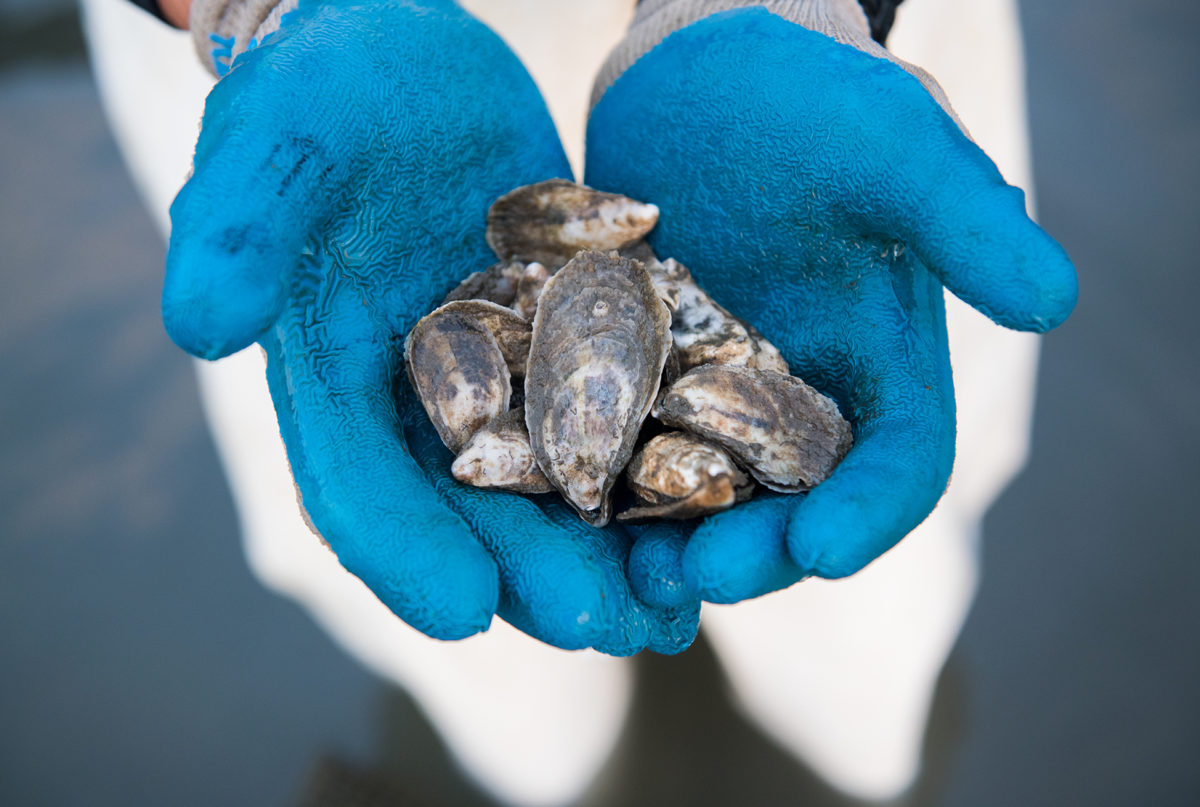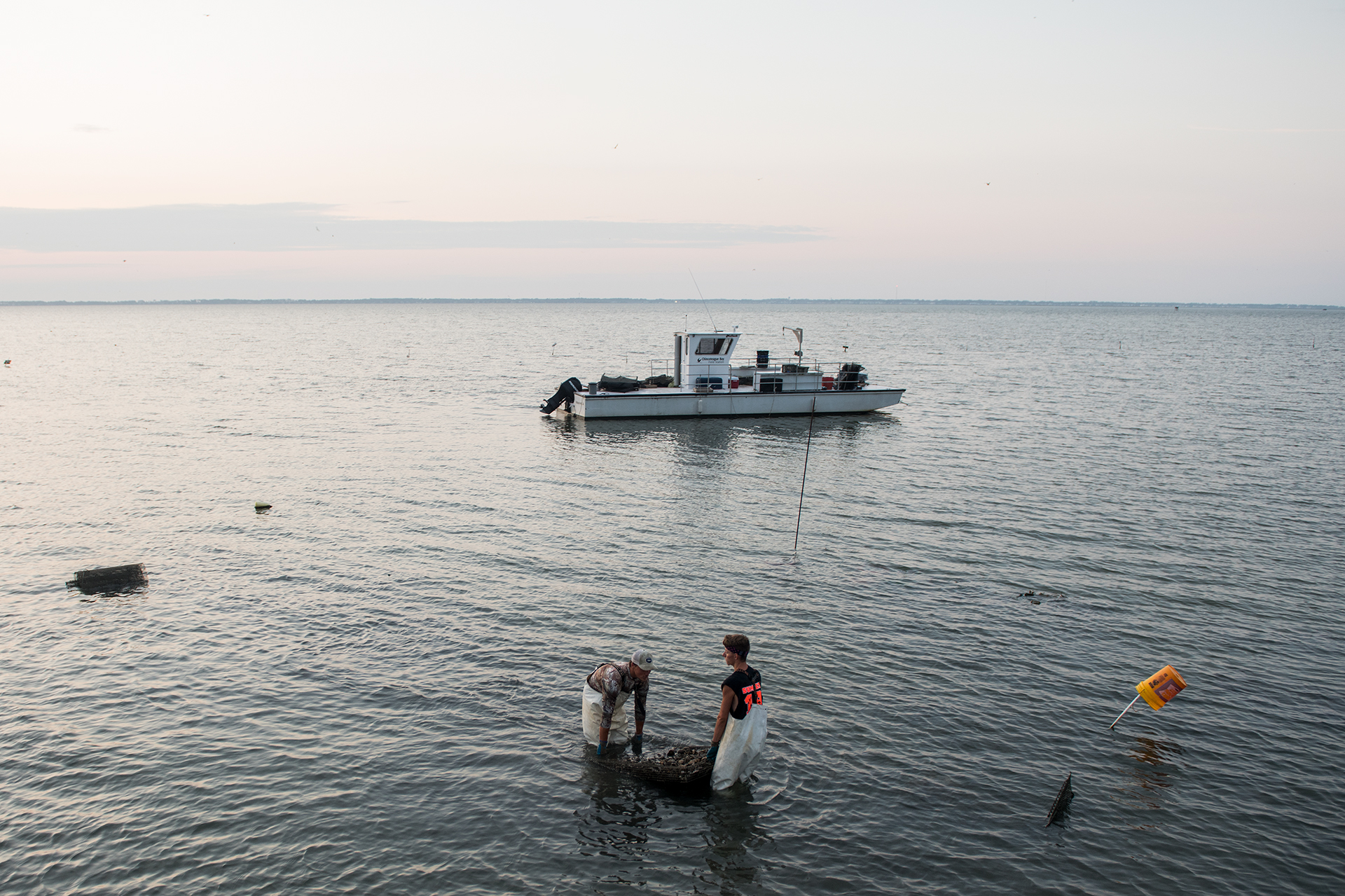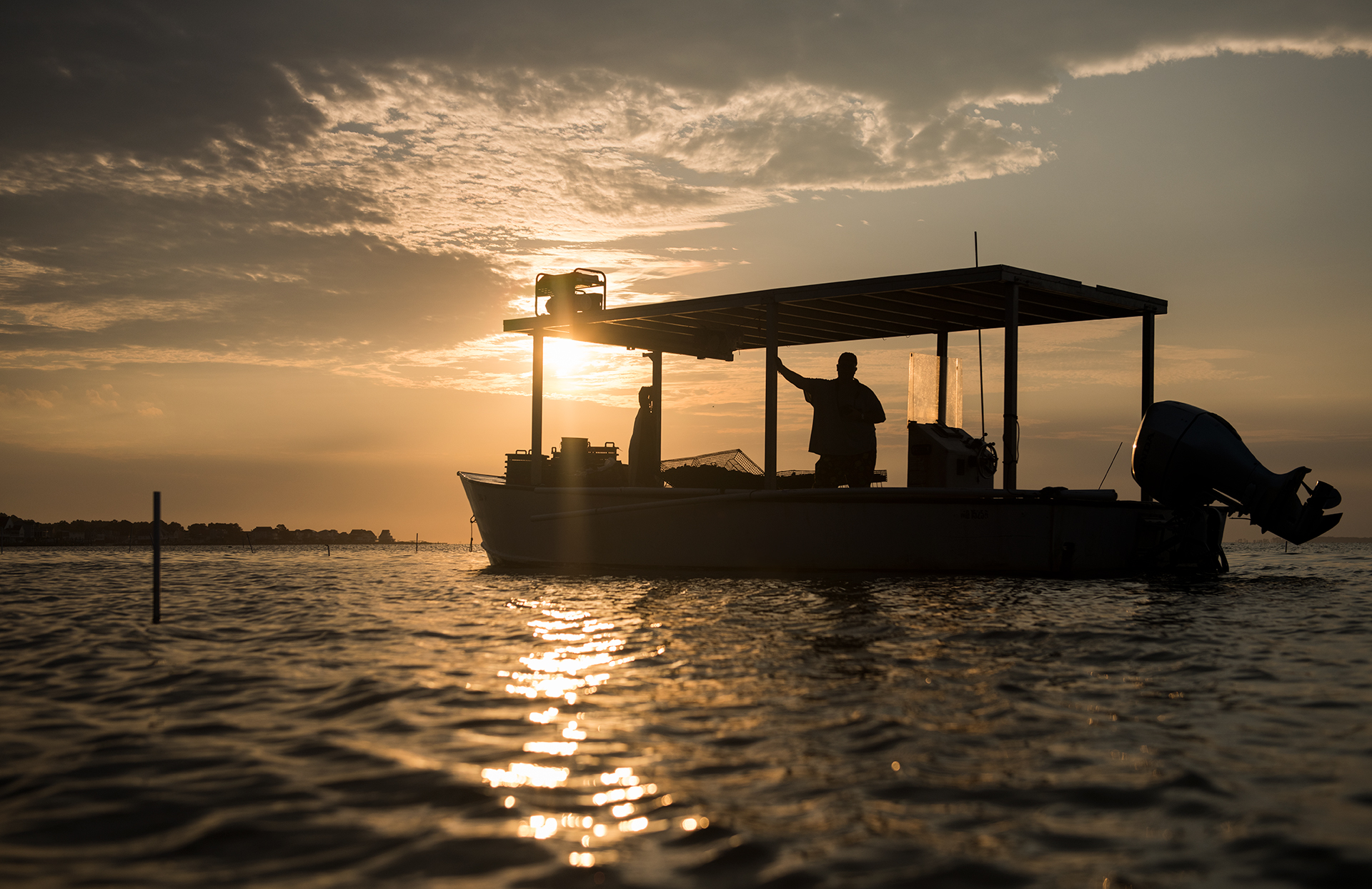THE TIDES HAVE TURNED Bennett Mumford has navigated his way to becoming a major player in the competitive regional oyster industry.
When College Life Wasn’t For Him, Bennett Mumford Turned To The Waters For An Education — And Found A Calling In Running His Own Ship
A briny oyster, perhaps dappled with hot sauce or a horseradish-cocktail saucy combination, deliciously disappears in the blink of an eye — as do the remaining oysters of the order. But consider the years of work that led up to that mouthwatering moment: Oyster farmer Bennett Mumford, 27, says the amount of time it takes to grow farm-to-table oysters might just blow your mind.
“The misconception is that oysters are purchased when they’re really small, like the size of a pea, and kind of just thrown out, that they sit there, while you count your money, and you get them two years later,” he said. “That couldn’t be further from the truth. We’re constantly taking them, grading them by size, keeping them clean as they grow.”
Bennett’s business, Mumford Shellfish, is located 20 miles outside his hometown of Ocean City. His traditional Chincoteague oysters hitting restaurant tables tonight would have been harvested before sunrise. They don’t have much of a mineral aftertaste and are just the right size for raw consumption.
“Not too small, not too big,” he said. “You can eat a dozen and get kind of full.”
Bennett’s journey into entrepreneurship began, unbelievably, after a disastrous first few weeks at college in Louisiana.
“I went [off to college], but football and beer kind of jammed that whole plan up,” he recalled. “I partied myself out. After a semester, I came back and was at my parents’ house for a few weeks. I went stir crazy; I didn’t want any more school.”
What he did want was to maintain his lifelong hobby of fishing. He up and moved to the Outer Banks, even sleeping out of his car for a spell, before landing a job at a boatyard. From there, he met some fishermen and went long-lining.
The adventure turned into a nearly five-year stint as a commercial fisherman.
“I learned the meaning of hard work and sticking with something, even when it’s not going so right,” he said. “You just have to keep after it. I really loved it. Some days I miss it. I met a lot of good people who are mentors to me in life. I don’t regret a moment of it.”
That same time, a friend’s father was running an oyster farm, and the concept intrigued him. He moved home and decided to take the plunge, going into the oyster-farming business for himself in 2014.
Ramping up his operation in the waters off Public Landing in Worcester County, Bennett bought the oyster seed and constructed his own oyster cages by hand. He even built his own boat, inside an abandoned chicken house, a plank-on-frame dead rise, which he named Audrey Grace, after his little sister.
It took about 18 months before he had any product to sell, but Mumford Shellfish finally started bringing oysters to market in the fall of 2015. His success led to bigger accounts, which in turn gave him the capacity to get to the next level of sales.
Today, Mumford Shellfish has as many as six full-time, in-season employees and two fishing boats. At its peak, Bennett ships large volumes of oysters from a warehouse to about 40 customers, as far away as Miami. He preaches having a consistent product — same size, same flavor — and always having something to sell when your customers really need it.
“I really do love what I do. What I really like is dealing with people. I like the customers I sell to. It started out with random people I cold-called who eventually become friends; I know their families. When they come to Ocean City, I see them on vacation,” he said.
Getting hungry? You can find Bennett Mumford’s Salt Shakers, a consistently full- bodied oyster with a salt-brine finish, on the menu at Harrison’s Harbor Watch, Seacrets, Fager’s Island, Marlin Moon Restaurant and SoDel Concepts restaurants, among other regular clients.
When asked what he wants people to know about his business, he pivots passionately to the act of eating an oyster.
“The most important thing with eating farm-raised oysters,” he said, “is learning how to shuck oysters correctly. Shuck from the front and the side is the best way. The biggest misconception is that they’re hard to shuck — they’re not. It’s just a technique thing. It’s pretty easy once you learn.”

Story by Brian Shane
Photos by Jay Fleming




